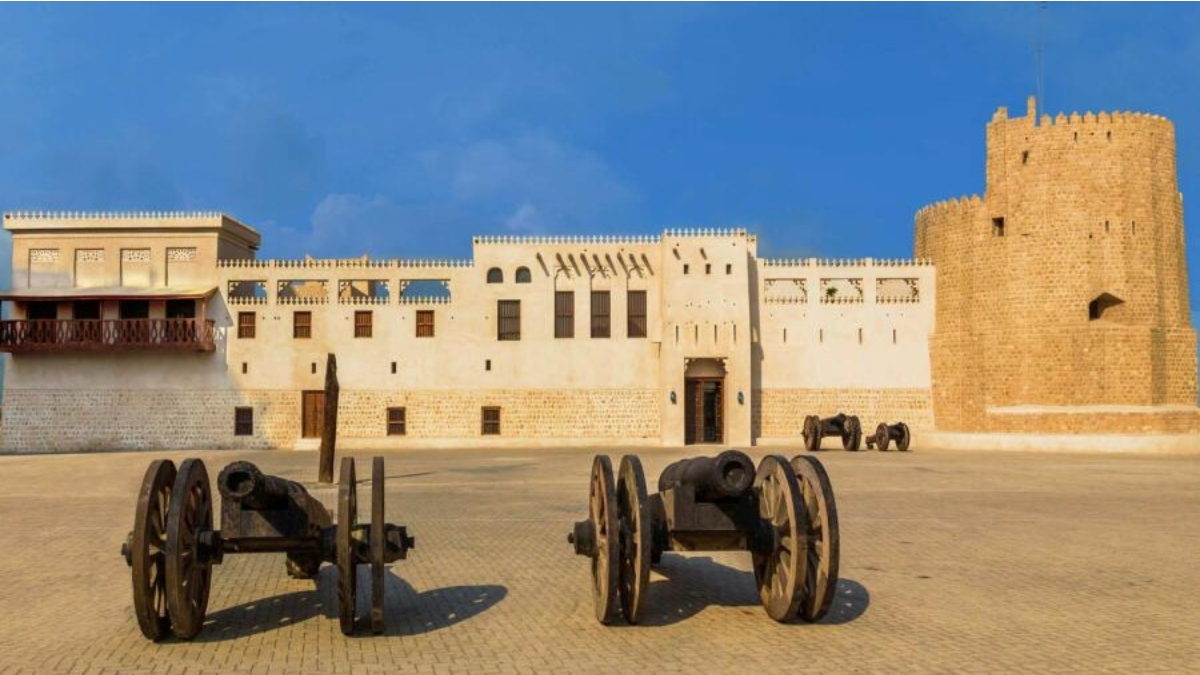In celebration of its bicentennial year, the iconic Sharjah Fort will open its doors for free to the public on December 1 and 2 as part of the UAE National Day festivities. Built in 1823, the historic fort stands as a testament to the Emirati community’s resilience and rich heritage.
Special tours and events during the festivities will spotlight the fort’s storied past, allowing visitors to immerse themselves in tales of Sharjah’s modern history, the ruling family, and daily life two centuries ago. The fort’s restoration journey, leading to its official reopening in 2015, will also be highlighted.
Among the treasures housed in the fort are an array of artifacts, capturing significant moments and symbols of the Emirate’s history:
The ‘dancing cannon’ or Al Raggas cannon, dating back to 1811, symbolizes the military prowess of Al Qawasim. The cannon played a pivotal role in the city’s victories.
A unique pearl magnifier, crafted from copper alloy, was historically utilized to verify the purity and value of pearls.
A luxurious royal bed once belonging to Sheikha Mahra Mohammed Khalifa Al Qasimi is on display, gifted to the museum by Sheikha Meera Ahmed Rashed Al Mualla. The elevated bed features intricate carvings and a four-step staircase.
Qawasim currency, copper coins issued in the early 1830s, provides a glimpse into the region’s economic history.
A replica of the pivotal 1820 treaty signed between the Qawasim, other Arab leaders, and the British underscores the shifting power dynamics of the era.
A wooden Quran stand from Sheikh Khalid bin Sultan Al Qasimi’s rule in the mid-1860s is inscribed with both the ownership and a Quranic verse.
The passport of Sheikh Sultan bin Saqr II, ruler of a Trucial State from 1924-1951, now recognized as the UAE, offers insight into regional diplomacy and governance.
Visitors are invited to explore these artifacts and more, diving deep into the Emirate’s rich cultural tapestry during the UAE National Day celebrations.






